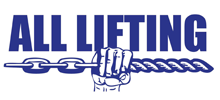
HOW OFTEN DO YOU NEED YOUR LIFTING GEAR INSPECTED?
Almost all of your lifting, rigging and height safety equipment that you use needs to be tested and tagged by a “competent person”.
Height Safety and Confined Space Equipment
This equipment needs to be visually inspected by a “competent person” at least every 6 months. For many fall arrest blocks and inertia reels/ winches, the manufacturer will have a recommended service schedule on top of the regular visual inspections. Servicing involves sending the unit back to the manufacturer where they pull apart and thoroughly check that everything is in full working order, additionally making any repairs where needed. Servicing can be required anywhere from yearly to every 5 years, this varies from supplier to supplier and the individual device.
Round and Web Lifting Slings
These types of slings need to be visually inspected by a “competent person” at a minimum of every 3 months.
Concrete Clutch/ Concrete Lifter
Concrete clutches need to be load tested every 12 months.

Cages & Fabricated Custom Items
These lifting devices should be load tested and fitted with a data tag when they are first manufactured. After the first load test, only a visual inspection is required annually.
Everything Else
Most of your remaining lifting and rigging equipment like chain slings, shackles, material handling equipment etc. need to be visually inspected at 12 monthly intervals.
Your equipment may need to be inspected at shorter intervals depending on how often it is used.
As with everything, there are some items that don’t fit inside these general categories or that might have specific requirements. There are also some sites that may have additional safety procedures.
Always check over your gear before you go to use it, as it may not be in the same condition since it’s last use.
Tips: If it doesn’t look the same, is really dirty, rusty, the hook doesn’t close or the mechanism doesn’t lock it’s probably no good to use. If you’re ever unsure about your equipment, here at All Lifting we are all about keeping you safe. Our safety inspectors can provide you with peace of mind to ensure you are meeting requirements.


